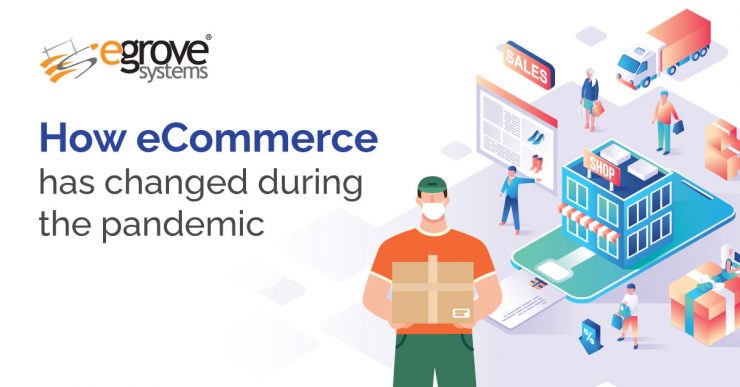For over a year, the Covid-19 pandemic has resulted in growth in eCommerce sales worldwide. In addition to keeping up with an increase in online deliveries, businesses faced many unanticipated challenges that required them to change their practices. 2020 has had a huge impact on the eCommerce development industry and these changes will shape the industry as it becomes a basic part of consumer sales.
2020 saw a boom in onlines sales that is continuing in 2021: in the US, eCommerce sales increased by 44% from 2019 to 2020, while in Europe, a 30% increase in sales to a total of $465bn is projected for 2021, per Finaria.it. Online sales in the US made up 21.3% of total sales, based on Digital Commerce 360 data. Shoppers have become more comfortable with ordering online and using mobile shopping apps to replace other forms of shopping.
New Industries Use eCommerce Development
With lockdown restrictions, consumers were forced to turn to eCommerce in areas they might have avoided before. Grocery delivery became popular as a way for consumers to get food and other necessities, and now grocery sales make up 12.4% of all eCommerce. The three fastest growing verticals in 2020 were apparel, food, and health and personal care products, per eMarketer. Essential healthcare products were up 35%, while even more discretionary purchases like skincare products and clothing rose by 15%. Clothing and footwear may have been a harder industry to penetrate as people prefer to buy them in person, but with effective return policies, they have proved to be viable for eCommerce.
Other trends include large store brands such as Walmart and Target moving into eCommerce, and meanwhile, small sellers have used marketplaces such as Amazon to run their own businesses. Small businesses account for 50% of products sold on Amazon and marketplace sellers earned an average of $160,000 in annual sales, compared with $100,000 the year before.
Read also:Promote Account Creation for your eCommerce Platform
Omnichannel Strategies
Physical storefronts suffered during the pandemic, leading them to seek solutions online. Omnichannel solutions let vendors present their products seamlessly across physical stores, websites, and mobile apps rather than treating them as separate businesses.
Buy-online, pickup in store is a popular solution that integrates online ordering with physical stores. It combines the convenience of being able to pick up in-person rather than wait for shipping with the ease of ordering and paying online without having to browse in-store and wait in line.
Curbside pickup went beyond store pickup and let customers pick up without having to go inside the store and wait in line. Only 7% of stores offered this in December 2019, while 44% offered it in August 2020, according to Digital Commerce 360. The trend of store pickup for online orders is continuing to grow in 2021, firmly establishing the continuing role of physical stores even in the age of eCommerce.
Other Takeaways
One notable observation is that brand loyalty has declined recently. Per McKinsey & Company’s August 2020 report, “75 percent of US consumers [are] trying a new shopping behavior in response to economic pressures, store closings, and changing priorities.” 36% of consumers reported trying a brand in 2020 and 25 percent incorporating a new private-label brand. 74% said that they expect these changes to last. Customers were willing to try new things and seek out reliable and trustworthy brands.
Certain product types didn’t do well in the pandemic; these include products that would be used in travel and social situations like vacations or parties that were clamped down on in the pandemic. As restrictions and consumer fears die down, it’s predicted that these products will also become more prominent in eCommerce.
With the younger generations making up a significant portion of eCommerce buyers, brands can rely on the changes to post-pandemic spending to be indicative of the generational trend. Brands that target young people can expect them to be channel-agnostic and willing to buy wherever they can get the best prices and convenience.
eCommerce growth has rushed what was expected to be a long-term trend, but signs indicate that the public is adapting well to the changes. eCommerce platforms can market to customers now while the pandemic persists and expect long-term results provided they offer a convenient, mobile-friendly, and easy-to-use digital storefront.
















Add comment